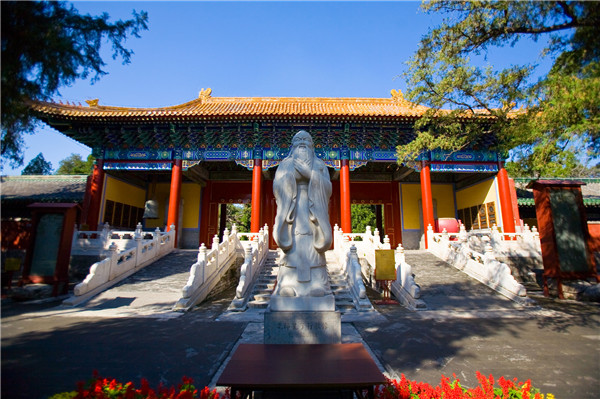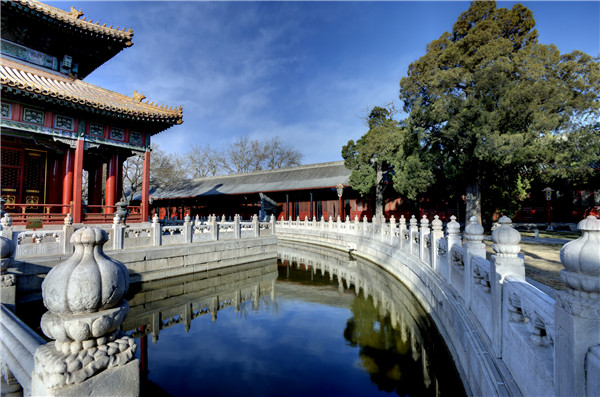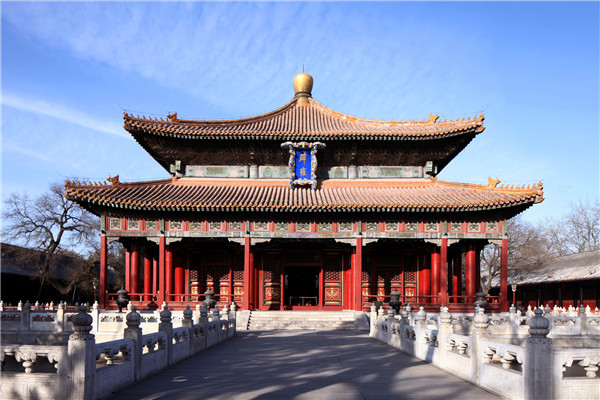Guozijian


[Photo/VCG]
Guozijian, also translated as Imperial College, was established in 1306. It served as the supreme administrative headquarters of the organization of education and the highest seat of learning during the Yuan (1271-1368), Ming (1368-1644) and Qing (1644-1911) dynasties.

[Photo/VCG]
Flanked by the Temple of Confucius and Yonghe Lamasery, it is located at 15 Guozijian Street (originally named Chengxian Street). Being the imperial college, it attracted much attention from the state, and was rebuilt many times. After two large-scale repairs in the Ming Dynasty, and the construction of Biyong Hall in the Qing Dynasty, it became what we see today, covering an area of 37,000 sq meters (44,250 sq yard). It was the last imperial academy in China and is listed as an important cultural relic site under state-level protection.

[Photo/VCG]
Facing south, it is the only imperial college from ancient times still preserved. It is a remarkable architectural complex, with over one hundred buildings. Jixian Gate (the front gate), Taixue Gate (the second gate), the glazed archway, Biyong Hall, Yilun Hall and Jingyi Pavilion are located along a central axis. On the east and west sides of the main building four halls and six palaces were laid out to achieve a symmetrical effect of perfect unity.
MOST POPULAR
- 1 China to give visa-free treatment to another 9 countries
- 2 China fully opens manufacturing sector to foreign investors in landmark opening up move
- 3 China's import expo attracts record-breaking participating countries, exhibitors
- 4 China's door opening even wider to foreign visitors, businesses
- 5 China revises rules to ease foreign strategic investment in listed firms
Editors' Picks
 Video:
Peru sees new port open
Video:
Peru sees new port open
 Infographic:
China's public holidays for 2025
Infographic:
China's public holidays for 2025
 Infographic:
Basic facts of APEC
Infographic:
Basic facts of APEC
 Infographic:
Wrapping up the 7th CIIE: Data recap
Infographic:
Wrapping up the 7th CIIE: Data recap



